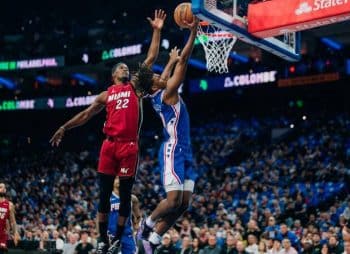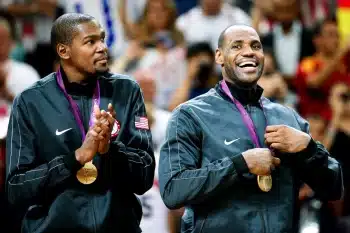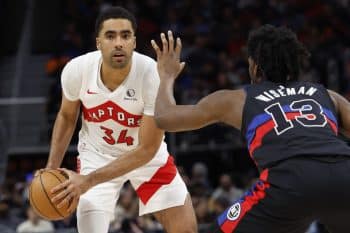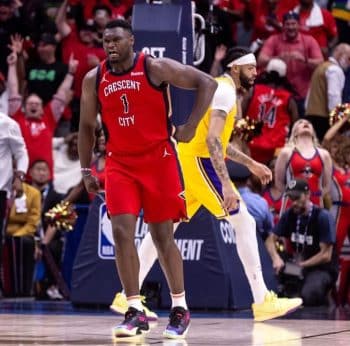NBA
C.J. McCollum on Role, New Challenges, Expanding Game
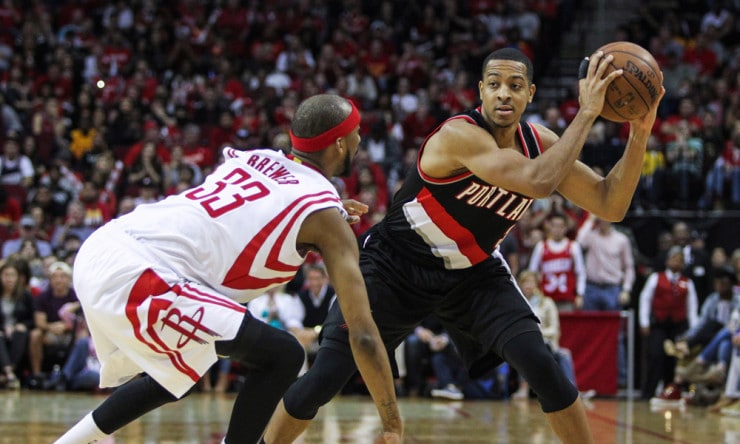
As a burgeoning NBA star, C.J. McCollum is coming to represent many things. He’s an example of how it can be beneficial for young talents to play behind veterans early in their respective NBA careers, and the ways it can help them down the road. He’s among the many contemporary players showcasing how vital elite shooting ability has become for guards in the league today. He’s representative of the way opportunity and hard work can combine to become greater than the sum of their parts.
What many don’t realize, though, is that McCollum is anything but an ordinary NBA success story. Many foresaw his ascent this season to some degree. As a 15 minute a night player or less his first two seasons who nonetheless showed flashes of starter-level talent, McCollum was clearly slated to take on a bigger role as guys like Wesley Matthews and Nicolas Batum departed Portland over the offseason.
The part casual observers gloss over, however, is the difficulty and rarity of McCollum’s upward trajectory. We like to think we all saw it coming when a young player comes from relative obscurity to star level so quickly, but the reality is that it’s extremely uncommon to see on such a large scale. A universal truth in the NBA is the way efficiency and volume will eventually develop an inverse relationship if both are pushed enough – McCollum has already crashed through the barriers many take years to push past (or never do).
“Just continuing to get more playing time, more experience on the court in in-game situations, makes it a lot easier,” McCollum told Basketball Insiders.
It sounds like a routine process to hear McCollum tell it, but really it’s anything but. Everyone in the NBA is talented, yes, but there are typically clear dividing lines between tiers herein – more often than not, guys trying to leap multiple rungs in a single jump find themselves in over their heads.
McCollum’s nightly minutes load has more than doubled, but his efficiency has risen right along with it. A 13.1 PER has leapt to 18.7, this while his percentage of team possessions used while on the floor has skyrocketed from 20 percent to nearly 27 percent. His shooting accuracy has only risen a tad on the whole, but context here is vital – he’s attempting more than triple his per-game shots compared with last season. The 18.1 field goals he’s attempting per night are ninth in the NBA, and only James Harden and Russell Westbrook have attempted more than his 651 total on the year. Most guys would see at least a temporary decrease in their efficiency after leaping from 241st in the league in total shot attempts to third overall, but McCollum isn’t most guys.
“He’s a special offensive player, man,” said teammate Gerald Henderson. “He’s taking on every game, taking on every team.”
His exploding numbers are anything but an effortless result of heavily increased volume. McCollum has elevated his game as a passer almost overnight, more than doubling the percentage of teammate baskets he assists while on the floor since last season. In fact, his per-minute assist figures have actually grown by a larger share than his per-minute point scoring.
“When you have the ball in your hands a lot, and you study film, you’re going to be able to get assists,” McCollum said. “You’ve got to be able to read the defense – it’s just about speeding up those reads and making the right pass at the right time.”
The time he’s put in with his decision-making is showing through, particularly in his pick-and-roll play. As a score-first, score-second guy in the two-man game his first couple years in the league, McCollum’s teammates weren’t benefiting enough from the gravity his shooting creates. He wasn’t finding shooters out of pick-and-roll sets often enough, and was turning the ball over too often on the occasions he did try to force passes through.
“I think I’ve proven I can be a reliable and dependable player night in and night out, a guy who can score,” McCollum said. “And now they’re starting to see I can do other things besides score.”
The change is evident. Blazers spot-up shooters sport a 58 percent effective field goal percentage following McCollum’s passes out of the pick-and-roll, per Synergy Sports, which is third-best in the entire league among guys who have thrown at least 50 such passes on the season. He’s sliced his turnovers in half on these plays, now under five percent, which is one of the 15 best marks among this same group.
“I think I’m just trying to find that balance [between] staying aggressive and making the right plays,” he said.
Passing is just one of several areas around the margins where McCollum has refined his game. He’s crashing the defensive boards with just a bit more frequency, which is vital for a team that lost both its starting big men over the offseason. His turnover percentage has remained roughly the same, but again, this is a plus for a guy with the ball in his hands so much more often every game. He’s fouling less than ever in his career to this point. His three-point shooting has remained mostly consistent, but his midrange game has taken a big leap – something McCollum told Basketball Insiders he worked hard on over the summer.
All these additions got their biggest test during a recent stretch where fellow star Damian Lillard missed his first ever NBA action. McCollum was thrust into an even bigger spotlight.
“It’s a lot different without Damian, obviously,” McCollum said. “He’s an All-Star, he’s a guy that makes the game easier for everyone, makes it easier for me. Defenses can’t load up as much, can’t put as much attention on me.”
You say that, C.J., but the results don’t really indicate many issues for McCollum minus his backcourt running mate. He upped his load even further and still didn’t see any diminishing returns in his efficiency – 26 points a night on nearly 50 percent shooting (his usual 40 percent from deep), 6.5 assists and 5.5 rebounds were his six-game averages. He managed this while drawing more free throws than usual and keeping his turnovers at the same level.
Put everything together and “Most Improved Player” is a title on many folks’ minds when discussing McCollum’s game this year. He’s conscious of it, but no more than that.
“I don’t know about ‘deserve,’” he said. “There [are] a lot of good candidates out there – I think I’m one of them. That’s out of your control. All I can control is my work ethic and my approach each and every day, and awards will take care of themselves.”
Whether or not he takes home any hardware, McCollum is making his mark. Most would falter at least somewhat while taking on such an increased burden, but he only seems to improve as more is put on his shoulders. There’s surely a theoretical limit somewhere, but he isn’t concerned with that. If he keeps making it look this easy, the ceiling might be higher than anyone had expected.
“Doesn’t seem hard [for him],” Henderson said with a small chuckle. “Doesn’t seem hard.”
